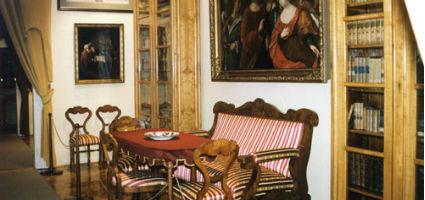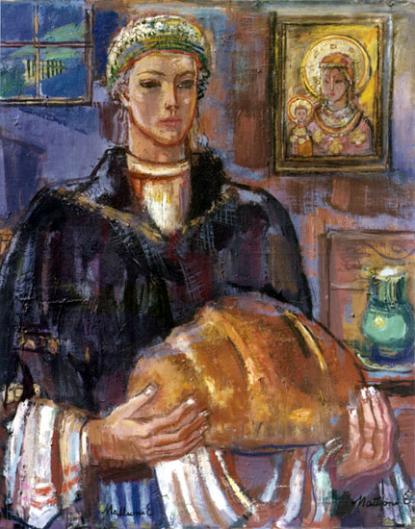2024. November 22. Friday
Mór Wosinsky Museum Megyeháza Exhibition Place - Szekszárd
 |
Address: 7100, Szekszárd Béla király tér 1.
Phone number: (74) 419-667
E-mail: wmmm@terrasoft.hu
Opening hours: A múzeum egész évben csak előzetes bejelentkezés alapján látogatható.
|
Museum tickets, service costs:
|
Ticket for adults
|
500 HUF
|
|
|
Ticket for students
|
300 HUF
|
|
|
Ticket for pensioners
|
300 HUF
|
E. Mattioni (1902-1992) was born in Szekszárd. Her father was an italian silk specialist, who worked in the silk factory of the Bezeredj family.

E. Mattioni was a pupil of Gyula Rudnay, the painter, at the Academy of Fine Arts in Budapest. Her first exhibition was also held in Budapest in 1929, and it was in the same year when she introduced her paintings at Szekszárd as well.
Contemporary critics quickly noticed her charasteristic sense of colours, glittering in all shades of a rainbow. At thes time she was under the influence of the Italian neo-classical style, her painting showed close links with the so called Roman School. At the 1937 World Exhibition in Paris, Hungary was represented by artists following this School. Here, E. Mattioni was awarded Diplome d'Honeur for her decorative paintings.
Betwen the years of 1931 and 1942 she was working at the artist colony of Szolnok city, under the guidance of the painter Aba Novak. This period had a strong effect on her painting. Her colours became more subdue, colder, her world of colours more simple, with dynamic brush strokes on the canvas. This period is represented by her works; "The Taban of Szolnok" and the "The fiest in the Matra."
It started at the artist colony, when she first invented (together with I. Polya) the so called "himeskő" technique, which she developed further on her own. This we could call the mosaics of the XXth century. Contrary to the classical method of using stone and glass pieces of similar diameters, she appiled marble pieces and semi- precious stone into the concrete, following the contours of the picture. Using these materials she created objects, flowers, trees and decorations.
She made a large sized composition using thes technique in 1943 in Budapest. Her next work is also a composition around the shrine of archbishop V. Apor in Győr in 1948. Her most noticeable religious work can be seen in the Rókus Chapel in Budapest (1970's).
The base of this exhibition is the bequest of the artist donated to her native city in 1981.

E. Mattioni was a pupil of Gyula Rudnay, the painter, at the Academy of Fine Arts in Budapest. Her first exhibition was also held in Budapest in 1929, and it was in the same year when she introduced her paintings at Szekszárd as well.
Contemporary critics quickly noticed her charasteristic sense of colours, glittering in all shades of a rainbow. At thes time she was under the influence of the Italian neo-classical style, her painting showed close links with the so called Roman School. At the 1937 World Exhibition in Paris, Hungary was represented by artists following this School. Here, E. Mattioni was awarded Diplome d'Honeur for her decorative paintings.
Betwen the years of 1931 and 1942 she was working at the artist colony of Szolnok city, under the guidance of the painter Aba Novak. This period had a strong effect on her painting. Her colours became more subdue, colder, her world of colours more simple, with dynamic brush strokes on the canvas. This period is represented by her works; "The Taban of Szolnok" and the "The fiest in the Matra."
It started at the artist colony, when she first invented (together with I. Polya) the so called "himeskő" technique, which she developed further on her own. This we could call the mosaics of the XXth century. Contrary to the classical method of using stone and glass pieces of similar diameters, she appiled marble pieces and semi- precious stone into the concrete, following the contours of the picture. Using these materials she created objects, flowers, trees and decorations.
She made a large sized composition using thes technique in 1943 in Budapest. Her next work is also a composition around the shrine of archbishop V. Apor in Győr in 1948. Her most noticeable religious work can be seen in the Rókus Chapel in Budapest (1970's).
The base of this exhibition is the bequest of the artist donated to her native city in 1981.
